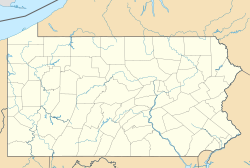Tuberculosis Hospital of Pittsburgh | |
 Building D | |
| Location | 2851 Bedford Ave., Pittsburgh, Pennsylvania |
|---|---|
| Coordinates | 40°27′12″N79°58′8″W / 40.45333°N 79.96889°W |
| Area | 4.9 acres (2.0 ha) |
| Architect | Mellon E. P.; Ingham, Boyd & Pratt |
| Architectural style | Renaissance, Vernacular, Institutional |
| NRHP reference No. | 93000073 [1] |
| Added to NRHP | February 25, 1993 |
The Tuberculosis Hospital of Pittsburgh in the Hill District neighborhood of Pittsburgh, Pennsylvania, United States, is a complex of eight buildings, with the first building completed in 1912. It was listed on the National Register of Historic Places in 1993. [1] [2]




